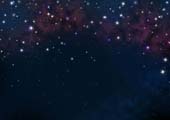
Purpose
To construct an improvised tube which will be used to observe the stars and be able to answer the question “Do you think stars move in outer space?”
Additional information
On moonless and cloudless nights, many stars can be seen twinkling in the sky. Through our naked eyes, we can see about a thousand or so of them. By using high powered lenses, we can see more stars. Those stars that can be seen by the naked eye and high powered lenses belong to the Milky Way galaxy. This galaxy is where our solar system belongs. Stars are big balls of burning gases. A very familiar star is our Sun. They all release heat and light energy in space. In order to observe these heavenly bodies, astronomers use a special instrument known as the telescope. It is an instrument used to gather information about stars. Astronomers are people specially trained to study stars and other heavenly bodies. A telescope consists of special mirrors and lenses that make distant objects appear bigger and closer. There are different kinds of telescope. As more knowledge is acquired, scientists invent better devices to study things in the environment. However, you can only observe stars in a clear night sky. You will notice that they come in various colors, sizes, and brightness.
Sponsored Links
Required materials
Estimated Experiment Time
2 hours every night for four days
Step-By-Step Procedure
- 1. Get a cardboard and roll it to make a tube about a meter long and two centimeters in diameter.
- 2. Fasten the ends with tape.
- 3. Set the tube on a window sill or in any place where you can see the night sky clearly.
- 4. Look through the tube opening and focus on a bright star.
- 5. Fasten the tube with masking tape to keep it in place.
- 6. Draw the position of the star as seen through the tube. Observe the star for two hours.
- 7. Use your improvised tube to observe other stars. Do your observation on four consecutive nights.
- 8. Choose a bright star and observe it for two hours every night. Draw its position.
Note
Secure your cardboard with masking tape to prevent it from moving. Make sure that your drawings are accurate by immediately writing or drawing your observation. You may conduct your activity from 7 to 9 in the evening, do not stay up late.
Observation
What is the position of the star as viewed through the tube’s opening? What changes have you observed? Do you think the star moved or changed its position?
Result
At first, the star was seen at the center of the tube. After a while, the star seemed to move from the tube’s center to its edge. However, it doesn’t mean that the star moved. This change is caused by the earth’s rotation. The cardboard tube helps the viewer focus on a heavenly body. It is an improvised telescope used to observe the sky.
Sponsored Links
Take a moment to visit our table of Periodic Elements page where you can get an in-depth view of all the elements,
complete with the industry first side-by-side element comparisons!